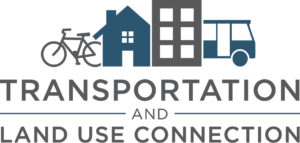
Prospective projects should consider the following program goals when applying.
- Maximize the value of investment in public infrastructure.
- Enhance access to opportunity.
- Increase travel options to optimize mobility.
- Create communities with opportunities to live, work, and play.
Assistance is available to municipalities, counties, townships, and multi-jurisdictional groups of local governments within the Wasatch Front Regional Council’s (WFRC) area of responsibility (Box Elder, Davis, Morgan, Salt Lake, Tooele, and Weber counties). WFRC encourages applications from two or more jurisdictions working together, within county boundaries.
Eligible projects include, but are not limited to the following.
- Using Wasatch Choice resources, such as Envision Tomorrow Plus (ET+), to generate land use scenarios for planning purposes.
- Projects that involve multi-jurisdictional coordination and regional collaboration.
- Activities that help to implement previously-adopted plans, such as revisions to ordinances or other land use regulations.
- Assistance with public participation related to developing or implementing local plans.
- Site assessments to determine the feasibility of projects, such as transit-oriented development projects or first/last mile strategies.
- Studies or specific plans related to important local issues, such as housing, transportation choices, or market studies.
- The development of local visions or plans.
Project phases, such as land acquisition, engineering, or capital investment, are not intended to be pursued through Transportation and Land Use Connection (TLC) program.
TLC was created to assist communities with challenging planning projects. For a competitive project, financial and in-kind community contribution is required. A minimum matched financial commitment of 6.77 percent is required. Applicant match percentage will be evaluated based on jurisdictional size. Community project managers participate in meetings and work closely with the consultant (if applicable) and WFRC point of contact to see projects through to completion.
TLC partners including WFRC, UTA, UDOT and Salt Lake County evaluate applications utilizing the selection criteria. Additionally the partners consider non quantifiable factors including the management of any ongoing projects and equity. Equity considerations include regional equity of awarded projects, whether the application addresses an equity concern, or if the application is from a geography identified as an equity focus area.
To support communities with challenging planning projects, three types of assistance are available.
- WFRC staff may provide technical expertise for different project types.
- A pre-qualified pool of consultants has been selected and are eligible to provide contracted work for TLC projects.
- Resource training may be provided to help communities achieve the goals of the TLC program and Wasatch Choice Vision.
